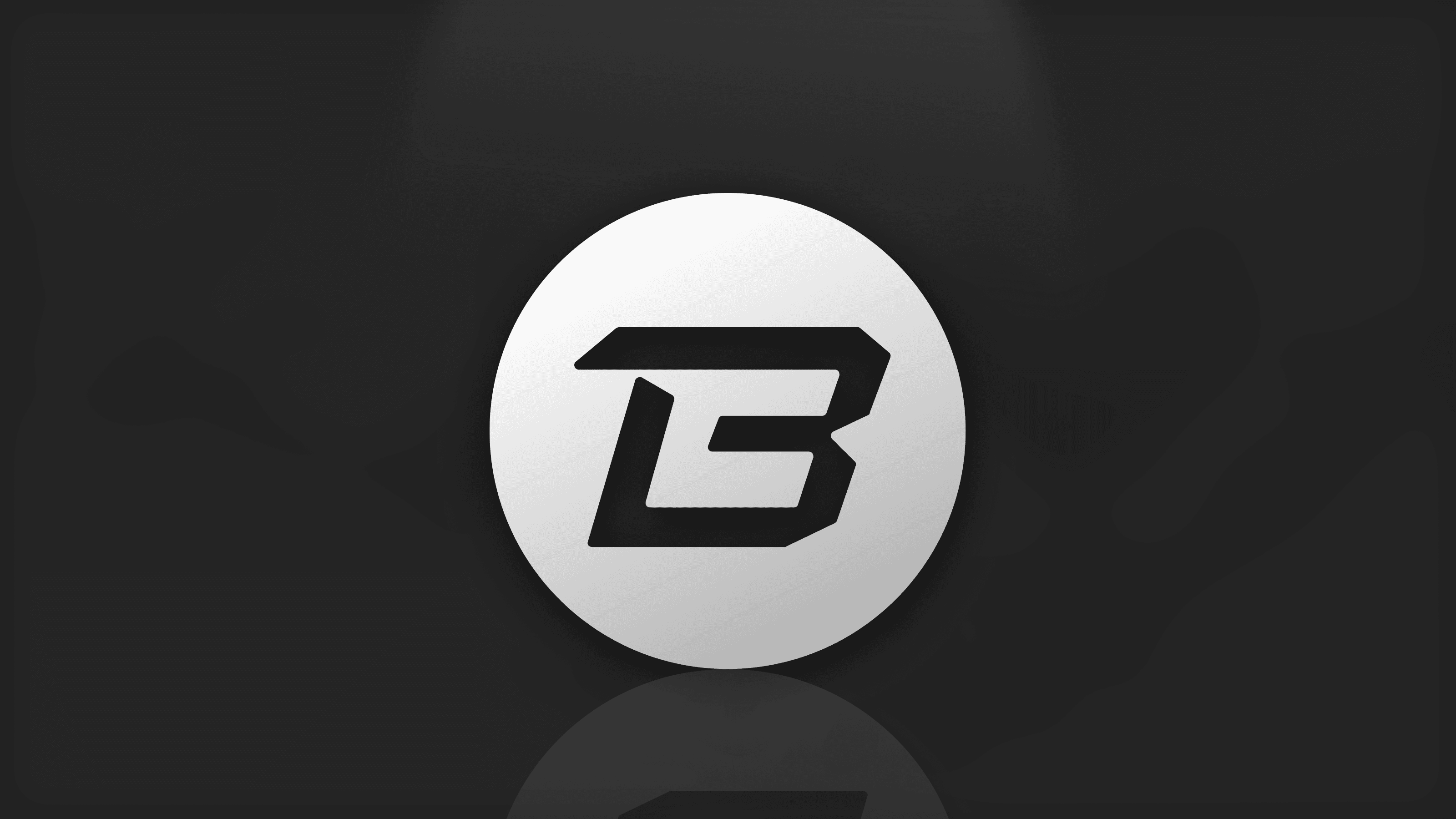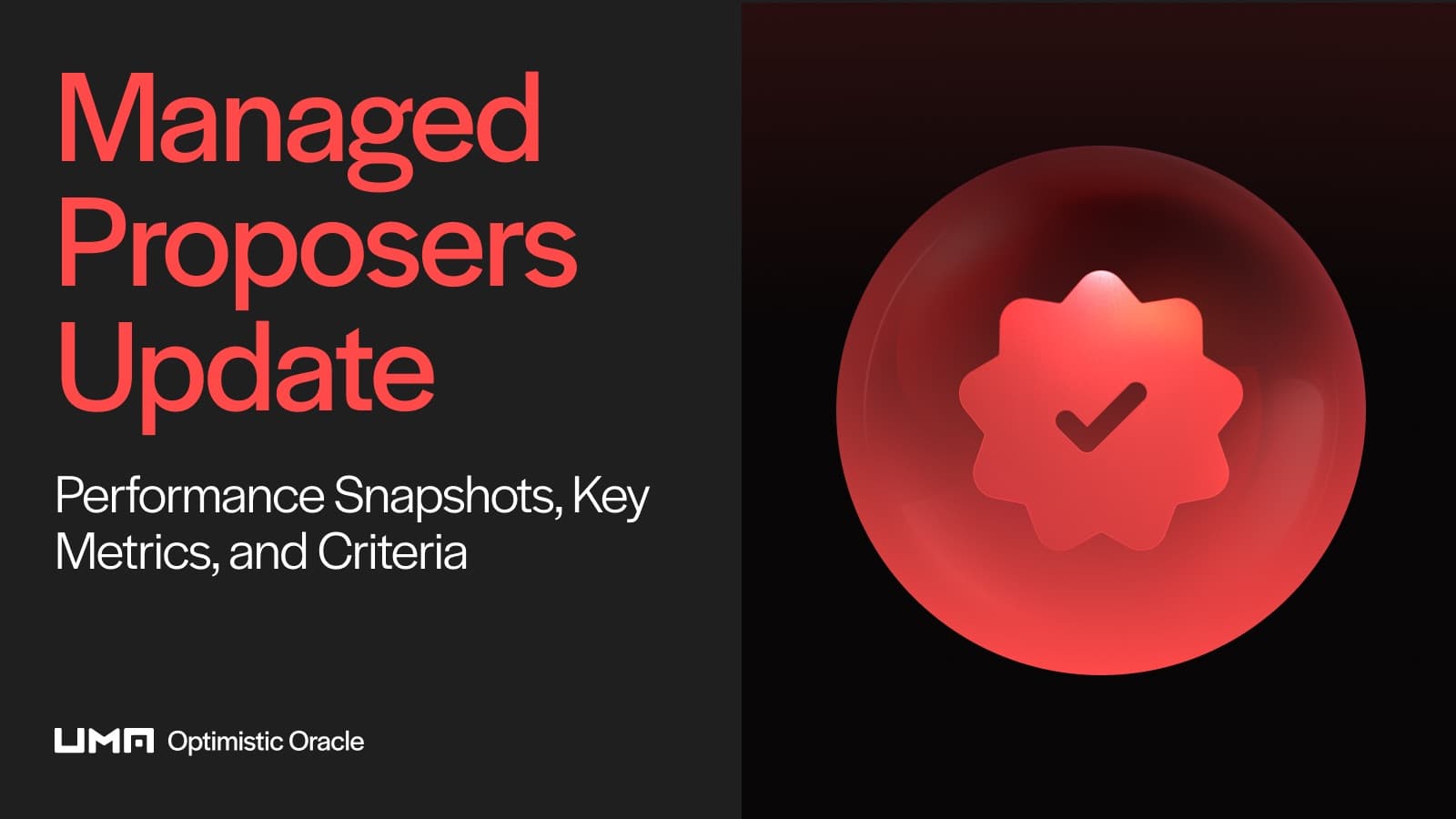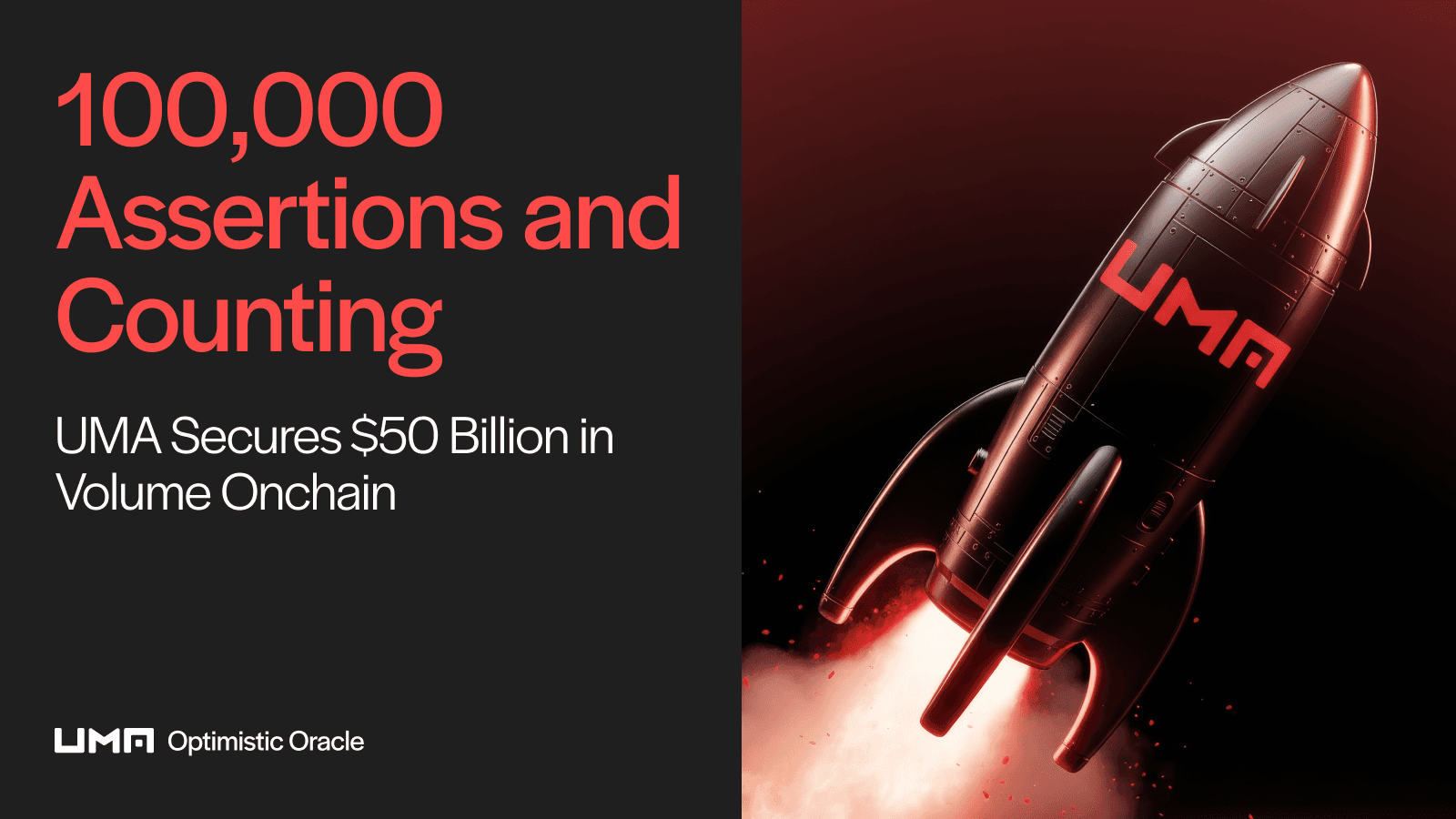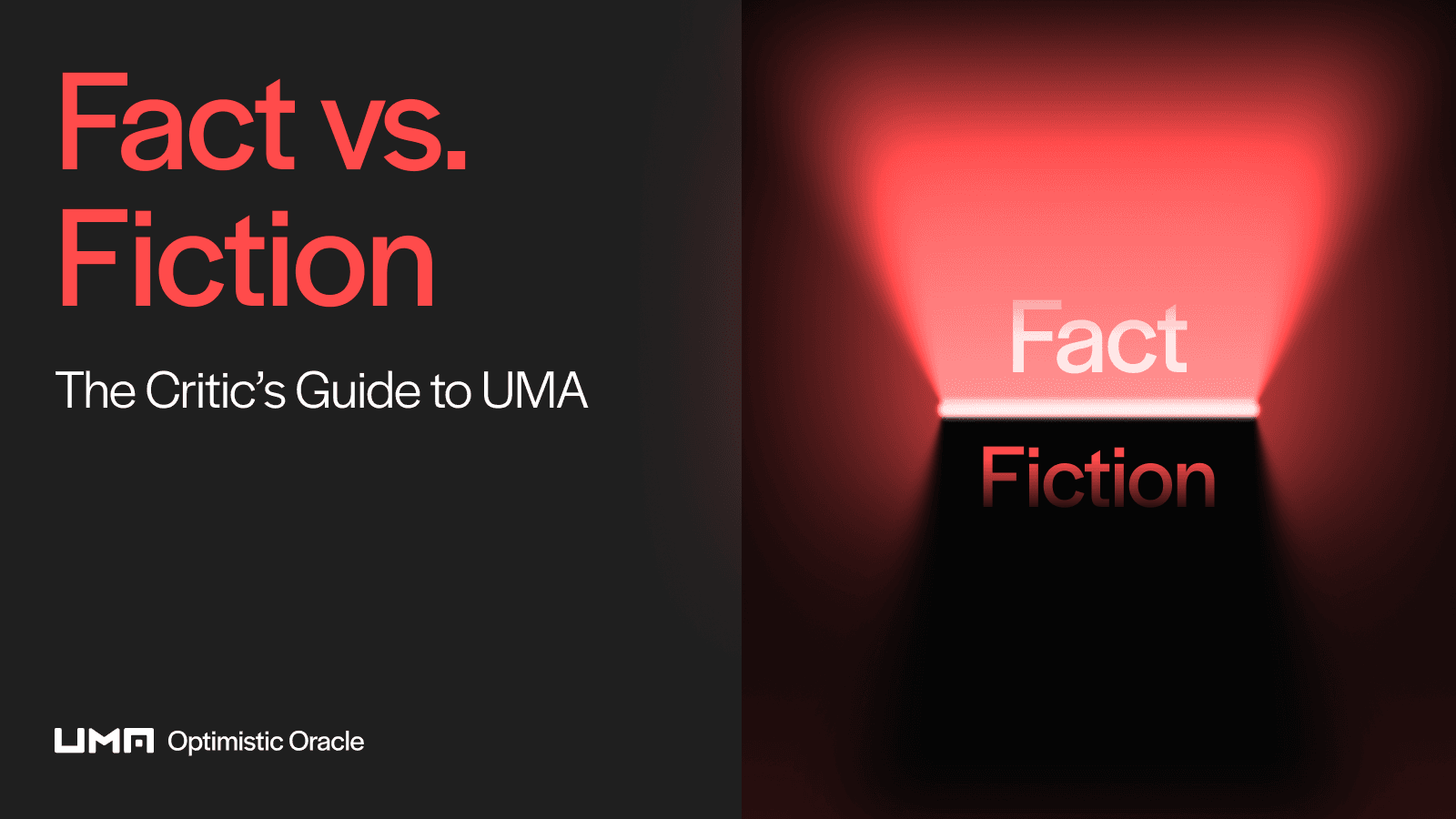Tldr; The Optimistic Oracle is live on Blast. This move offers Blast builders the ability to leverage the OO’s flexibility to support their applications. The update is another sign of UMA expanding its presence across Ethereum’s fast-growing Layer 2 ecosystem.
Key takeaways:
UMA’s Optimistic Oracle has launched on Blast.
Blast is a nascent Layer 2 network and the OO will help developers build their innovations.
Possible use cases for the OO include a sports trading card game, an NFT insurance platform, or a loyalty and membership program, but the scope is limitless.
The Layer 2 ecosystem is gaining pace. In the last year, the amount locked on Layer 2 has doubled to ∼14 million $ETH, dozens of new rollups have emerged, and a wide array of experimental applications have attracted loyal user bases. UMA is watching this space closely and Blast’s rapid rise has been one of the most notable developments of the past few months.
Today we announce that UMA is expanding its Layer 2 presence as the Optimistic Oracle launches on Blast. With this update, builders on one of Web3’s fastest-growing Layer 2 networks can leverage UMA’s optimistic system to power their innovations.
UMA’s deployment on Blast follows an April launch on Base. The Ethereum ecosystem is evolving and UMA is doubling down on Layer 2. This latest move should accelerate the ecosystem by empowering Blast builders to use the OO to bring their ideas to life. Learn more below.
What is the OO?
The OO trustlessly verifies things about the world and records the information onchain. It can be used to validate any kind of data, whether it’s verifying that a bridge transfer happened, an MEV violation in a staking pool, or the outcome of a sports event.
In UMA’s oracle system, any statement can be proposed as true and UMA validates the statement. The system uses economic incentives to encourage honest participation, which means most statements are accepted as true and dispute cases are rare.
When disputes arise, $UMA tokenholders vote to resolve the bond. In return, they get rewarded for voting correctly. The OO is “optimistic” because disputes are rare due to the system’s incentive mechanism.
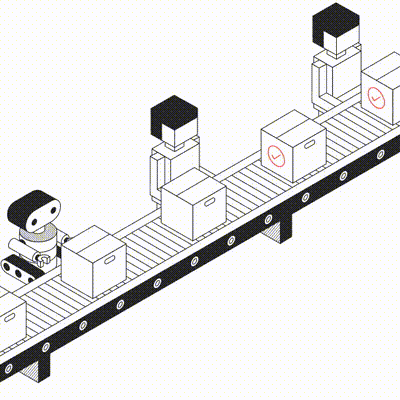
The OO is extremely flexible. As it can verify any kind of information, it can support a wide variety of use cases. Today, the OO powers the leading decentralized prediction market Polymarket, the intents-powered interoperability protocol Across, and Vega’s points derivatives markets, and many other projects.
The OO also secures oSnap, a popular tool that helps DAOs execute offchain governance decisions onchain. oSnap currently secures ∼$550 million for organizations like CoW, Nexus Mutual, and the Arbitrum Foundation.
The OO’s role in powering these applications illustrates its ability to support a wide range of Web3 innovations. With many new applications and chains hitting the market, new use cases for the system keep emerging.
About Blast
Blast is a nascent Layer 2 chain launched by the team behind the NFT trading venue Blur. Blast went live on mainnet in February 2024 and has quickly become one of the most used Layer 2 networks. According to L2Beat data, it currently holds $1.75 billion, trailing only Arbitrum, Base, and Optimism.
Blast was the first Layer 2 project to introduce the “native yield” concept, leveraging protocols like Lido and Maker to generate returns for users. It’s also the home of popular applications like the Eigenlayer-based restaking hub Renzo, the onchain casino Decentral Games, and the SocialFi trading card game fantasy.top.

With the OO now live on Blast, builders on the network can use the system’s optimistic design pattern to power their ideas.
What can you build with UMA on Blast?
Blast builders could use the OO for myriad applications. Below are some ideas for potential use cases:
A sports or celebrity trading card game
Sports betting accounts for a significant portion of the gambling industry, and though the sports industry has started to move onchain through fan tokens and NFT collectibles, Web3 has very few sports betting games today. The OO is perfectly suited to power sports-based onchain trading card games because it can easily verify real-world data about players such as their match statistics and health reports.
Similarly, a trading card game could let people trade tokens for their favorite celebrities. When Margot Robbie appears in a new Box Office hit or ABBA announces a comeback tour, the OO could verify the information and boost their rankings in the game.
The OO could trigger payouts to gamers, with each in-game character represented through a dynamic NFT that updates based on real-world information.
An NFT and digital art insurance platform
Since the 2021 NFT boom, the ecosystem has started to diverge into two brackets: “NFT collectibles” and “digital art.”
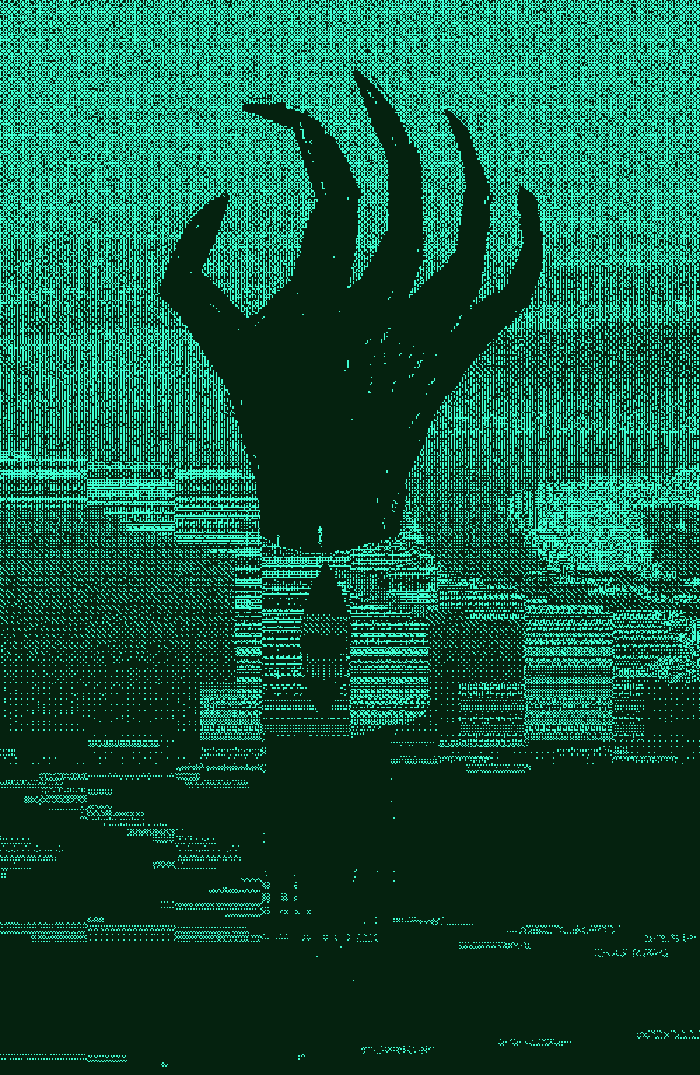
In the digital art scene, works by artists like XCOPY, Sam Spratt, and Alpha Centauri Kid are increasingly being hailed as fine art masterpieces. The most sought-after pieces sell for millions of dollars when they move.
This environment has created a market for digital art insurance. Such a platform could protect collectors against incidents like wallet draining or physical theft. If a hacker steals an XCOPY 1/1 worth 500 $ETH, the original owner could file a claim including details on the asset’s value. The OO could determine whether a hack happened and the sum the collector should receive then issue a payout.
A loyalty club for restaurants, theaters or music venues
Subscription services like Netflix and DashPass found huge success in the Web2 app era but they’re yet to catch on in Web3. This will change as scaling and UX improves.
Builders could use the OO to build an onchain loyalty club, verifying information about participating venues. This service could offer discounted access to participating venues and use the OO to issue rewards for visitors and reviewers.
Powering the next big innovations on Layer 2
The Layer 2 ecosystem is experiencing rapid growth and the OO has recently expanded to new networks in response. UMA’s deployment on Blast marks another step to support the Layer 2 future, with builders and users set to benefit.
As UMA is flexible, it can support many different use cases, creating limitless opportunities for builders. Some of Web3’s most exciting applications are emerging on Layer 2 today, which makes this update more significant. We look forward to seeing UMA power the next generation of killer applications on Blast.
To learn more about Blast, head to the website. To find out how to integrate the OO into your project, visit our website.
Words by @dreamsofdefi
